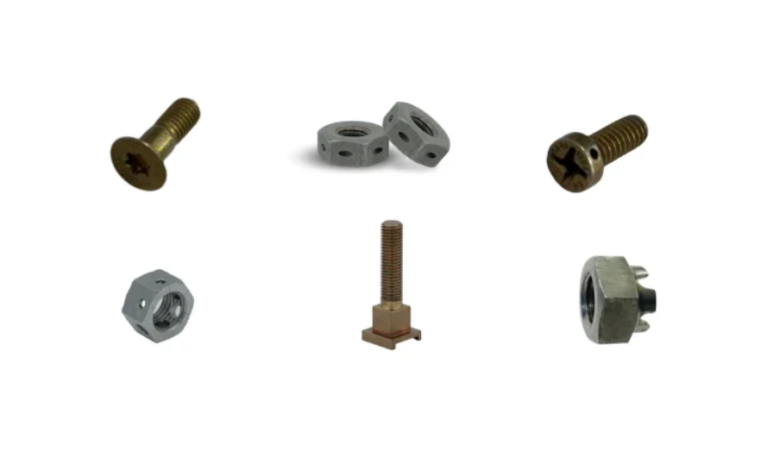Aerospace Fasteners in Extreme Conditions: How They Ensure Reliability at 30,000 Feet

Commercial aircraft face extraordinary challenges during flight operations. Temperature fluctuations can shift from scorching runway heat to sub-zero altitudes within minutes. Vibrations from powerful engines create constant stress on every component of the aircraft. These extreme conditions demand fastening solutions that can never fail when lives depend on them.
The demanding environment of aerospace applications requires aerospace fasteners specifically engineered for reliability under extreme conditions. Standard industrial fasteners simply cannot withstand the unique combination of pressure changes, temperature cycling, and mechanical stress encountered during flight operations. Aviation engineers must carefully select components that maintain structural integrity across thousands of flight cycles without compromising safety standards.
Performance Under Extreme Environmental Stresses
Temperature Cycling Challenges: Fasteners made specially for aircrafts endure remarkable temperature variations that would destroy conventional hardware. During takeoff, components near engines experience temperatures exceeding 150°C, yet at cruising altitude, the same fasteners face temperatures dropping below -60°C. This thermal cycling creates expansion and contraction forces that can loosen connections or cause material fatigue over time.
Vibration Resistance Requirements: Jet engines generate intense vibrations that propagate throughout the aircraft structure. Fasteners must resist these dynamic loads without loosening or developing stress fractures. The constant mechanical oscillation tests every joint repeatedly throughout each flight, requiring fasteners with exceptional fatigue resistance and self-locking capabilities to maintain proper tension.
Pressure Differential Management: Cabin pressurisation creates significant pressure differentials between interior and exterior environments. Fasteners securing pressure bulkheads and cabin structures experience cyclic loading with each pressurisation cycle. This repeated stress pattern demands materials and designs that can handle millions of pressure cycles without developing cracks or losing structural integrity.
Critical Material Selection for Aerospace Applications
Titanium Alloy Advantages: Titanium fasteners offer superior strength-to-weight ratios whilst maintaining excellent corrosion resistance. These materials handle temperature extremes better than steel alternatives and resist stress corrosion cracking in harsh environments. The lightweight properties help reduce overall aircraft weight, improving fuel efficiency without sacrificing structural performance or safety margins.
Stainless Steel Applications: High-grade stainless steel fasteners provide reliable performance in less critical applications where weight savings are less crucial. These materials offer excellent durability and proven track records in aerospace environments. Proper grade selection ensures adequate performance against corrosion and temperature cycling challenges commonly encountered in aircraft operations.
Specialised Coating Technologies: Advanced surface treatments extend fastener life and improve performance characteristics. Anti-galling coatings prevent thread seizure during installation and maintenance operations. Dry film lubricants reduce friction and wear patterns that could compromise joint integrity. These protective treatments are particularly important for fasteners that require periodic removal during scheduled maintenance intervals.
Quality Assurance Through Rigorous Testing Protocols
Testing procedures for aerospace applications far exceed standard industrial requirements. Every batch faces comprehensive evaluation protocols designed to simulate years of operational stress in controlled laboratory conditions. Perhaps the most critical aspect involves fatigue testing that subjects fasteners to millions of load cycles representing decades of flight operations.
Non-Destructive Testing Methods: Advanced inspection techniques detect internal flaws that visual inspection cannot identify. Ultrasonic testing reveals microscopic cracks or inclusions within the fastener material. Magnetic particle inspection highlights surface discontinuities that could propagate into failure points. These testing methods ensure only perfect components reach aircraft assembly lines where safety cannot be compromised.
Environmental Simulation Testing: Specialised chambers recreate the extreme conditions fasteners will encounter during service life. Temperature cycling tests rapidly alternate between extreme hot and cold conditions. Salt spray testing evaluates corrosion resistance over extended periods. Vibration testing subjects components to frequencies and amplitudes matching actual flight conditions to verify fatigue resistance.
The following testing standards apply to aerospace fastener qualification:
- Tensile strength verification – Testing ultimate load capacity under controlled conditions to ensure specifications exceed operational requirements
- Torque-tension relationship validation – Confirming proper clamping force develops during installation procedures used by maintenance teams
- Thread integrity assessment – Evaluating thread form accuracy and surface finish quality that affects joint performance over time
- Corrosion resistance evaluation – Extended exposure testing in harsh chemical environments to simulate years of operational exposure
See also: Why B2B Businesses are Outsourcing their Marketing endeavor to Stay Ahead in 2025 Trends
Installation and Maintenance Considerations
Proper installation techniques are crucial for achieving design performance from aerospace fasteners. Torque specifications must be followed precisely to develop correct clamping forces without overstressing the fastener or surrounding structure. Installation tools require regular calibration to maintain accuracy within tight tolerances demanded by aviation safety standards.
Maintenance Schedule Requirements: Regular inspection intervals allow early detection of potential problems before they compromise safety. Visual inspections check for signs of corrosion, cracking, or loosening that could indicate developing issues. Torque checks verify that proper clamping forces remain within acceptable ranges after operational stress exposure.
Replacement Criteria Guidelines: Clear replacement guidelines help maintenance teams make informed decisions about fastener serviceability. Age limits, cycle counts, and visual condition assessments provide objective criteria for replacement decisions. When in doubt, replacement is always the safer choice given the critical nature of aerospace applications, where failure is not acceptable.
Conclusion
Aerospace fasteners represent critical safety components that must perform flawlessly under extreme operational conditions. The combination of advanced materials, rigorous testing protocols, and proper maintenance procedures ensures reliable performance throughout aircraft service life. Understanding these requirements helps engineers and maintenance professionals make informed decisions about fastener selection and care. For aerospace applications where failure is not an option, investing in properly specified and tested fastening solutions provides the reliability and peace of mind that flight operations demand.




